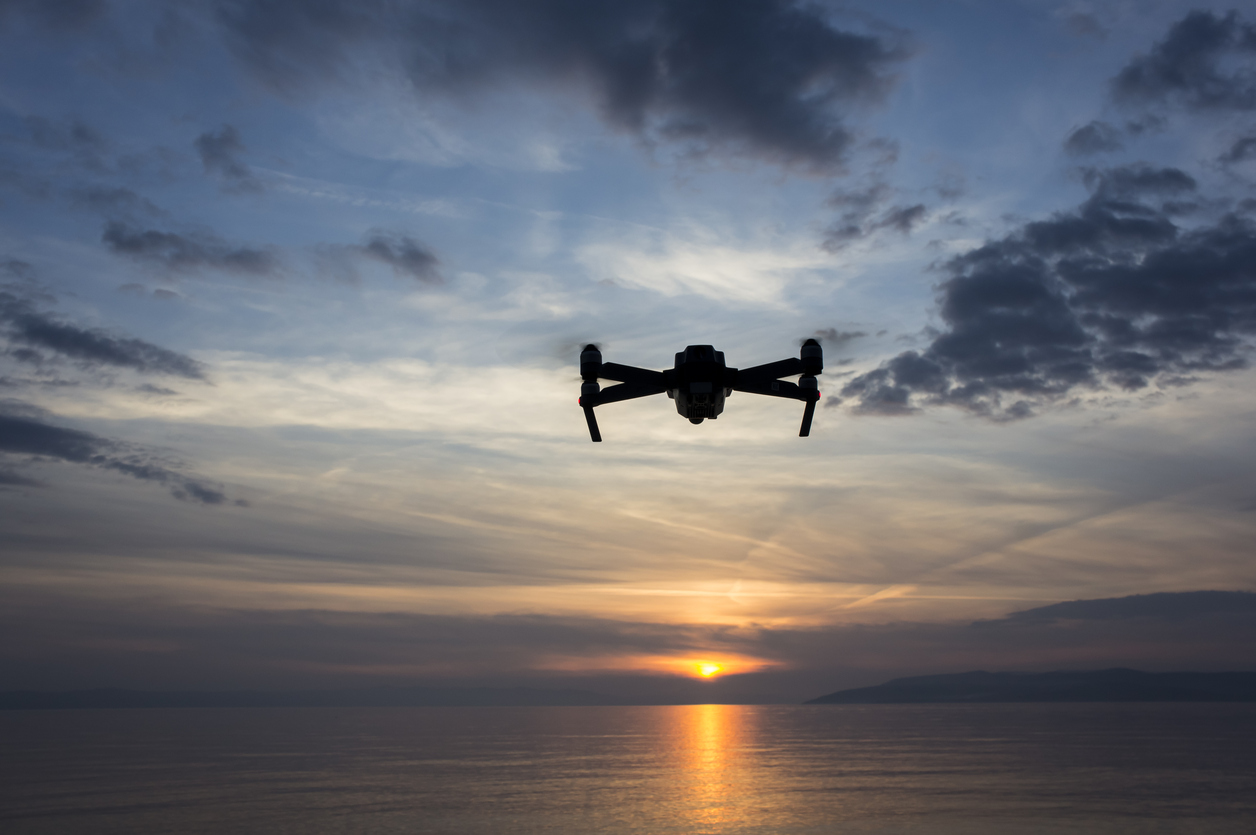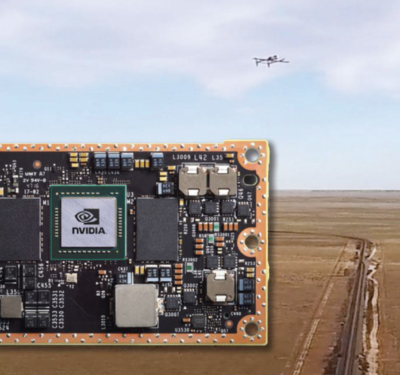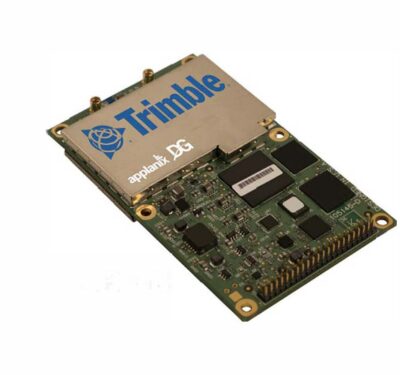
Four days before the new year, after 53,000 public comments on the draft rule and almost one year after the Notice of Proposed Rulemaking (NPRM) launch, the waiting is over. The Federal Aviation Administration has released its final Remote Identification (RID) Rule. Inside Unmanned Systems received an advance copy of the 499-page document, and here’s our summary of the new rule. Expect a full review of the rule and its implications in our February-March edition.
What it Is
The rule creates a new Part 89 in Title 14 of the Code of Federal Regulations, Remote Identification of Unmanned Aircraft. It essentially requires a “digital license plate” for unmanned aircraft (UA) to be operated in the U.S., one that both people on the ground and other airspace users can receive. (See “Types of RID” below for details.). This rule is specifically for UA (the unmanned air vehicle itself) and not unmanned aircraft systems (UAS – which includes the control station and data link). This recognizes that manufacturers might make UA’s that are controlled by another manufacturer’s control stations. More importantly, it ensures that the UA will be broadcasting RID and not the control station. Very important if the UA goes lost link.
Timelines
The Rule is effective 60 days from the expected publication date in the Federal Register in January 2021. Operators have thirty months and manufacturers have 18 months after this date to comply (i.e., 60 days plus 30 months).
RID Is Needed For
UAs weighing 55 pounds or less that must be registered under part 47 or part 48, with few exceptions. Of note, the FAA scrapped the requirement that all UA obtain a unique registration number. Recreational users remain an exception and can still be issued a single registration number for multiple UAs.
RID Is Not Needed For
Homebuilt unmanned aircraft: Under pressure from hobbyists, the FAA didn’t specify how much of a UA had to be homebuilt and instead defined a homebuilt UA as a UA that an individual built solely for education or recreation. Homebuilt UA can only fly in an FAA-recognized identification area (FRIA). More details on FRIA’s later.
UA of the United States government armed forces. This is a registration-based rule and military aircraft are not required to be registered under part 47 or part 48.
UA that weigh 0.55 pounds or less on takeoff. Again, these UA don’t require registration, so no RID either
Research UA: UA designed for the purpose of aeronautical research or test UA designed to show compliance with regulations. This requires an Administrator-authorized deviation under § 89.120.
UA with an exception or deviation. In addition to aero research, under a different provision, the FAA Administrator can authorize other deviations from the rule under 14 CFR § 89.10.
UA flying under part 91 that are transmitting ADS-B Out (§ 89.101(b)). Part 107 operators still cannot use ADS-B Out or transponders but UAS operating under part 91 can use ADS-B Out under an exception. UA using ADS-B don’t need RID as long as they are flying part 91 approved operations. Nothing in the rule precludes equipping a Part 91 UA with both ADS-B Out and RID; it just precludes part 107 operators from using ADS-B to avoid saturating ADS-B frequencies.
Indoor UA Operations. The RID requirements only apply when the UA exits the interior of a building or structure and is operated outside, so indoor ops are not subject to RID.
Types of RID
The big news is this rule contains broadcast-only requirements. Network-based/internet transmission requirements and the use of third-party UAS Service Suppliers (USS) were eliminated “at this time.” UAs will broadcast the RID message elements listed below directly from the UA via radio frequency broadcast. The public can use personal wireless devices within range to receive RID. Correlating the serial number or session IDs with the registration database is limited to the FAA only, but can be made available to authorized law enforcement and national security personnel upon request. We will have more on this in next month’s longer article.
Standard RID UA (§ 89.110). These will probably be UAs manufactured after this rule with RID “hard wired” in. Standard RID UAV cannot take off if they fail a RID self-test or do not broadcast these message elements:
(1) A unique identifier to establish the identity of the unmanned aircraft. Operators can choose either the serial number of the unmanned aircraft or a session ID (for operator privacy).
(2) UA latitude, longitude, geometric altitude and velocity. Geometric altitude and velocity are new. Geometric replaced barometric largely as a hat tip to GPS. Velocity was added to align with other RID standards, such as ASTM F3411-19 and international implementations, and to better pinpoint the vehicle.
(3) Control station latitude, longitude and geometric altitude. This is a major stipulation from law enforcement.
(4) A time mark
(5) An emergency status indication. So the UA can squawk lost link if need be.
The Rule contains an operational checklist of sorts. RID equipment must be functional before flight and remain so—and not disabled—from takeoff to shutdown (versus just landing). RID ops can occur when the UA has a serial number that is listed on an FAA-accepted declaration of compliance and the Certificate of Aircraft Registration of the UA used in the operation includes the serial number of the UA, as per applicable requirements of parts 47 and 48. Or, the serial number of the UA must be provided to the FAA in a notice of ID pursuant to § 89.130 prior to the operation. This last bit is new.
RID Broadcast Module (§ 89.115(a)). Operators can use a broadcast module if their UA isn’t hardwired for RID. The broadcast module concept is a RID retrofit option that allows UA’s built without remote identification (e.g., existing unmanned aircraft fleet, home‑built unmanned aircraft) to be operated outside of FAA‑recognized identification areas.This will keep older UA flying until UA’s with RID “baked in” are available. These modules can be a separate device attached to an UA or a feature built into it, and will broadcast identification, location and take-off information.
The RID broadcast module message elements are identical-standard RID UA except: no control station location (replaced by takeoff location), emergency status is not required and there is no session ID option. The FAA recognized that “bolt on” RID will not interface with the UA’s operating system like “baked in” RID will; hence it would be tough for broadcast module RID to know the GCS location or emergency status.
The RID broadcast module checklist is the same as for standard RID, except the UA must remain in sight of the remote pilot. This signals that only “baked in” RID ops will be able to fly BVLOS.
Flight in FRIAs (§ 89.115(b)). This was adopted from the NRPM and, perhaps in the FAA’s eyes, a concession to hobbyists because it allows UAs to fly without RID in approved areas. Community-based organizations recognized by the Administrator (i.e. the Academy of Model Aeronautics) and educational institutions can start applying for FRIA’s 18 months after the rule is effective and applications may be submitted at any time after that. Adding educational institutions to the organizations who can propose FRIA’s is a welcome addition from the NPRM.
Compliance
The Rule impacts not just operators, but also designers and manufacturers. It contains both design and production requirements. The FAA is using performance-based requirements. Manufacturers must show that their standard RID UA or broadcast module meets the performance requirements of an FAA-accepted means of compliance. Industry consensus standards will be one means, but they have not been accepted by the FAA yet.
Major changes from the Notice of Public Rulemaking (NPRM) Version
The massive change from the NPRM is deletion of the networked remote ID portion of the requirement. The FAA and commercial drone industry had a lot riding on networked RID. RID UAS Service Supplies (USS) were going to aggregate networked RID and provide it as a bedrock service to enable UAS traffic management (UTM). Tracking networked RID UAs was supposed to be easy; government users would only have to query RID USSs to find out where any UA was flying.
Then the public comments came. We will cover this in more depth in January’s articles, but suffice it to say that valid concerns about cyber security (If all UAs are connected to networked RID, can’t they all be hacked?), privacy (Who gets to see all that data? Could they sell it to foreigners?) and availability (Rural users might not have connectivity. First responders in a disaster area definitely would not.) Many, many commenters were opposed to potentially paying fees to connect to a RID USS. However, the nail in the coffin was probably the European Union Aviation Safety Agency saying they envisioned a broadcast-only solution.
All this aside, the FAA was careful to say that they were only eliminating network‑based remote identification requirements at this time and they were committed to incremental rule making for unmanned aircraft systems. Hence, the door is still open to networked RID. Just not now.
The Big Remaining Question:
Unfortunately, how does all this work?
The rule was conspicuously quiet on what spectrum RID would use and didn’t even commit to a single frequency solution. Veterans of the ADS-B frequency wars of the 20th century will remember that spectrum was the big question for ADS-B, yet it doesn’t rate a mention in these 21st century rules. The FAA is undoubtedly counting on industry consensus standards to fill this gap but our sense is the standards groups such as ASTM, have a lot of work to do if they must carry the burden of finding available spectrum that will work for UA RID world-wide. Keep in mind, ASTM spent the last two years developing a detailed RID standard based on the NPRM which put a lot of weight on networked RID.
Spectrum matters. Law enforcement, the military, and homeland security need to know if they’re buying antennas to cover one frequency or a dozen. Granted, RID is supposedly just for ID and not separation, but what if manned aircraft operators want to use RID to avoid collisions? How will they know that a RID broadcast won’t get lost in a sea of competing signals? We would have felt a lot more comfortable with this rule if the FAA had addressed this important issue and expended some research effort on it in the last four years if they intended a broadcast-only solution for RID.
Almost 500 pages and, as a practical matter, how this will actually work continues to elude us. Well, at least we have 30 months to sort all of this out.
*The views and opinions in this article are those of the author and do not reflect those the DOD, do not constitute endorsement of any organization mentioned herein and are not intended to influence the action of federal agencies or their employees.
Dawn M.K. Zoldi (Colonel, USAF, Ret) is a licensed attorney and a 25-year Air Force veteran. She is an internationally recognized expert on unmanned aircraft system law and policy, a recipient of the Woman to Watch in UAS (Leadership) Award 2019, and the CEO of P3 Tech Consulting LLC, connecting people with a passion for advanced tech platforms with the policies, plans and programs they need to succeed.
Major General James Poss (USAF, Ret) is a leading expert on UAS having targeted the first armed UAS strikes, designed the U.S. Air Force’s remote spit operations system for UAS control and helped design the Distributed Common Ground Station for UAS intelligence analysis. General Poss was the Executive Director of the Alliance for System Safety of the UAS through Research Excellence (ASSURE) of the Federal Aviation Administration’s (FAA) Unmanned Aerial Systems (UAS) Center for Excellence Team. He is CEO of ISR Ideas – an intelligence, unmanned systems and cyber warfare consulting company with decades of intelligence community experience coupled with insider FAA knowledge.






